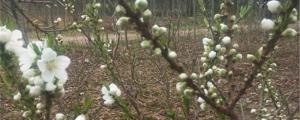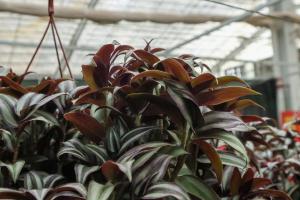Are Palm Trees Flowering Plants?
When we think of palm trees, we often picture the iconic image of long, swaying fronds and delicious coconuts hanging from the branches. But are palm trees considered flowering plants? The short answer is yes, but the explanation is a bit more complex.
The Anatomy of Palm Trees
Palm trees belong to the family Arecaceae, and there are over 2,500 species of palm trees around the world. They are generally characterized by their tall, slender trunks (or stems) and large, feathery fronds that grow from the top of the trunk. Most palms are evergreen, meaning that they retain their leaves throughout the year, and some varieties produce delicious fruit such as coconuts, dates, and acai berries.
Although palm trees are often categorized as flowering plants, they have some distinct differences when compared to other flowering plants. For example, palm trees do not have typical, showy flowers like roses or tulips. Instead, they produce small, inconspicuous flowers that are clustered together in groups called inflorescences. These clusters can be located at the base or top of the palm tree's leaves, or near the trunk.
Palm Tree Reproduction
Despite their unconventional flowers, palm trees are still able to reproduce and spread their genetic material. In fact, some palm trees can live for over 100 years and produce thousands of seeds in their lifetime.
When palm trees reproduce, they rely on a process called pollination. Pollination occurs when pollen (which contains the male genetic material) is transferred from the stamens of one plant to the stigma of another plant. In the case of palm trees, pollination is often facilitated by wind or insects.
Once a palm tree is pollinated, it can take several years for the tree to produce mature fruit. The fruit of the palm tree is actually a type of seed called a drupe, and it contains a single seed surrounded by fleshy or fibrous tissue. Some examples of palm tree drupes include coconuts, dates, and oil palm fruit.
The Importance of Palm Trees
Despite their peculiar flower anatomy, palm trees play an important role in many ecosystems around the world. They provide valuable shade and shelter for animals, and their fruit is a source of food for many species (including humans). In addition, palm trees are often used in landscaping and as decorative plants in homes and public spaces.
The oil produced from palm tree fruit (specifically the oil palm fruit) is widely used in the food industry, and is found in products such as chocolate, margarine, and baked goods. While the use of palm oil has been controversial due to deforestation and habitat destruction, there are sustainable ways to produce palm oil that minimize environmental damage.
In Conclusion
So, are palm trees considered flowering plants? Yes, but with some important distinctions. While palm trees do produce flowers, these flowers are not the showy, colorful blooms that we often associate with flowering plants. Regardless, palm trees are a unique and valuable part of many ecosystems and play an important role in both natural and human landscapes.

 how many times do yo...
how many times do yo... how many planted tre...
how many planted tre... how many pine trees ...
how many pine trees ... how many pecan trees...
how many pecan trees... how many plants comp...
how many plants comp... how many plants can ...
how many plants can ... how many plants and ...
how many plants and ... how many pepper plan...
how many pepper plan...

































